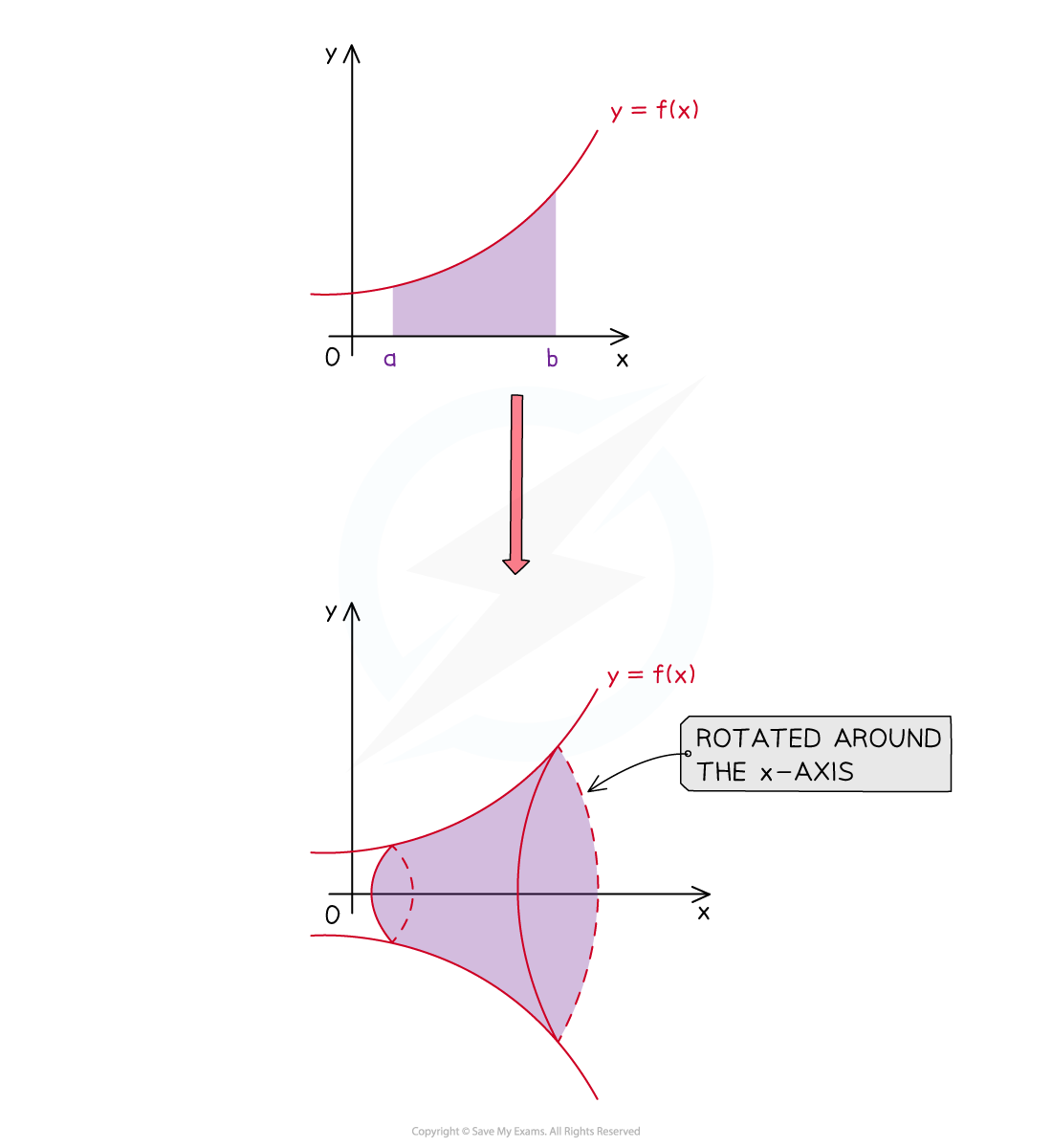Volumes of Revolution (DP IB Applications & Interpretation (AI)): Revision Note
Did this video help you?
Volumes of revolution around x-axis
What is a volume of revolution around the x-axis?
A solid of revolution is formed when an area bounded by a function
(and other boundary equations) is rotatedradians
around the
-axis
The volume of revolution is the volume of this solid

Be careful – the ’front’ and ‘back’ of this solid are flat
They were created from straight (vertical) lines
3D sketches can be misleading
How do I solve problems involving a volume of revolution around the x-axis?
Use the formula
is a function of
and
are the equations of the (vertical) lines bounding the area
If
and
are not stated in a question, the boundaries could involve the
-axis (
) and/or a root of
Use a GDC to plot the curve, sketch it and highlight the area to help
Visualising the solid created is helpful
Try sketching some functions and their solids of revolution for practice
Examiner Tips and Tricks
This volume of revolution formula is given in the exam formula booklet.
STEP 1
If a diagram is not given, use a GDC to draw the graph of
If not identifiable from the question, use the graph to find the limits
and
STEP 2
Use a GDC and the formula to evaluate the integral
Thus find the volume of revolution
Examiner Tips and Tricks
The functions involved can be quite complicated so type them into your GDC carefully.
Whether a diagram is given or not, using your GDC to plot the curve, limits, etc. (where possible) can help you to visualise and make progress with problems.
Worked Example
Find the volume of the solid of revolution formed by rotating the region bounded by the graph of , the coordinate axes and the line
by
radians around the
-axis. Give your answer as an exact multiple of
.
Answer:

Did this video help you?
Volumes of revolution around y-axis
What is a volume of revolution around the y-axis?
Very similar to above, this is a solid of revolution which is formed when an area bounded by a function
(and other boundary equations) is rotated
radians
around the
-axis
The volume of revolution is the volume of this solid
How do I solve problems involving a volume of revolution around the y-axis?
Use the formula
is a function of
the function is usually given in the form
this will need rearranging into the form
and
are the equations of the (horizontal) lines bounding the area
If
and
are not stated in the question, the boundaries could involve the
-axis (
) and/or a root of
Use a GDC to plot the curve, sketch it and highlight the area for practice
Visualising the solid created is helpful
Try sketching some functions and their solids of revolution to help
Examiner Tips and Tricks
This volume of revolution formula is given in the exam formula booklet.
STEP 1
If a diagram is not given, use a GDC to draw the graph of
(or
if the function is already given in that form)
If not identifiable from the question use the graph to find the limits
and
STEP 2
If needed, rearrange
into the form
STEP 3
Use a GDC and the formula to evaluate the integral
(Your GDC will likely require you to enter the function written with '
' as the variable instead of '
')
Thus find the volume of revolution
Examiner Tips and Tricks
Functions involved can be quite complicated so type them into your GDC carefully.
Whether a diagram is given or not, using your GDC to plot the curve, limits, etc. (where possible) can help you to visualise and make progress with problems.
Worked Example
Find the volume of the solid of revolution formed by rotating the region bounded by the graph of and the coordinate axes by
radians around the
-axis. Give your answer to three significant figures.
Answer:


Unlock more, it's free!
Did this page help you?